
Original Author: Little Date Jun
The USB drives, TF cards, SD cards we often use, as well as DDR memory and SSD hard drives used in computers, all belong to the technology we call “semiconductor storage”.
Today, I will focus on sharing knowledge in this area.
Modern storage technology can be broadly divided into three main parts: magnetic storage, optical storage, and semiconductor storage.
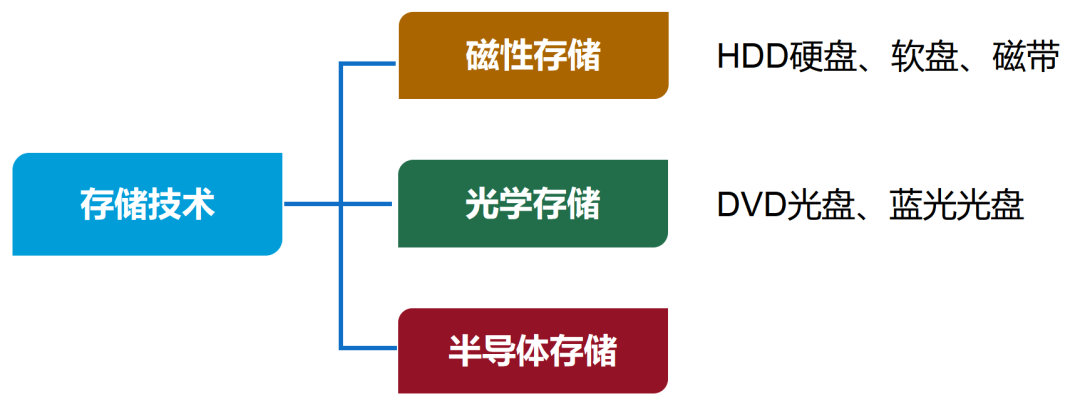
Semiconductor memory, in simple terms, is a memory that uses “semiconductor integrated circuits” as the storage medium.
If you take apart your USB drive or SSD hard drive, you will find that it contains PCB circuit boards and various chips and components. Among them, there is a type of chip specifically designed for data storage, sometimes referred to as “storage chips.”
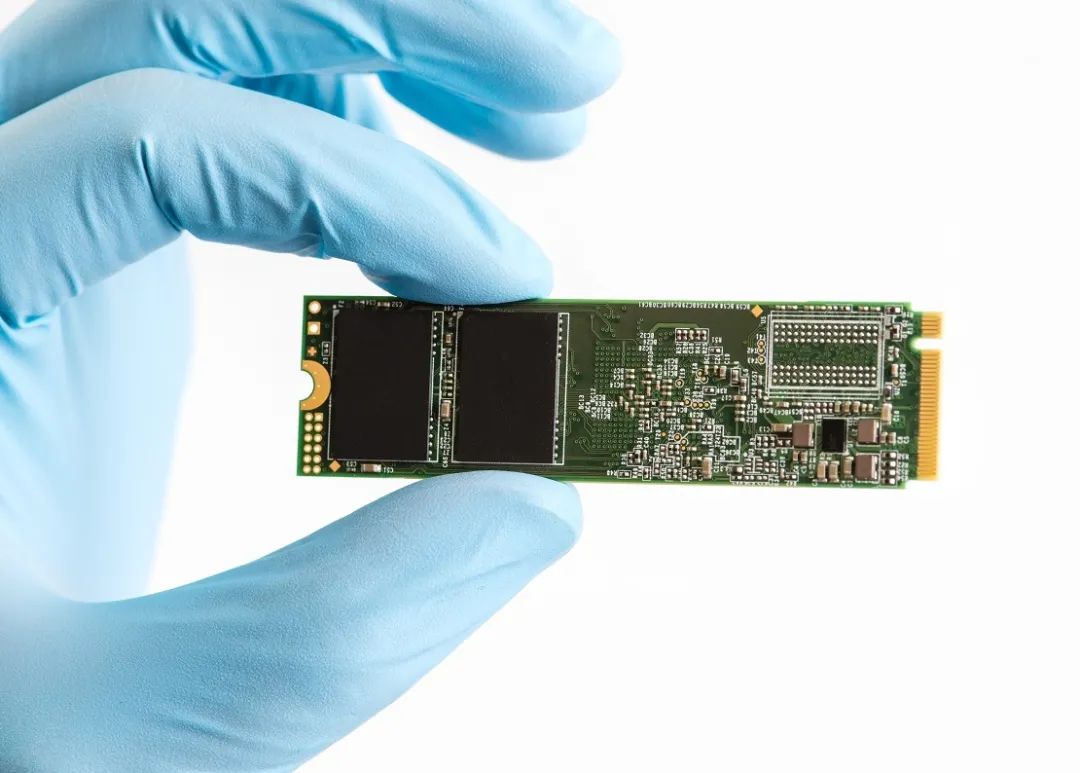
Structure of SSD Hard Drives
Compared to traditional disks (such as HDD hard drives), semiconductor memory is lighter, smaller, and faster in read and write speeds. Of course, it is also more expensive.
In recent years, society’s attention to the semiconductor chip industry has been very high. However, the main focus has been on computing chips such as CPU, GPU, and mobile SoC.
Little do they know, semiconductor memory is also one of the core pillars of the entire semiconductor industry. In 2021, the global market size for semiconductor memory was $153.8 billion, accounting for 33% of the entire integrated circuit market size, which is one-third.
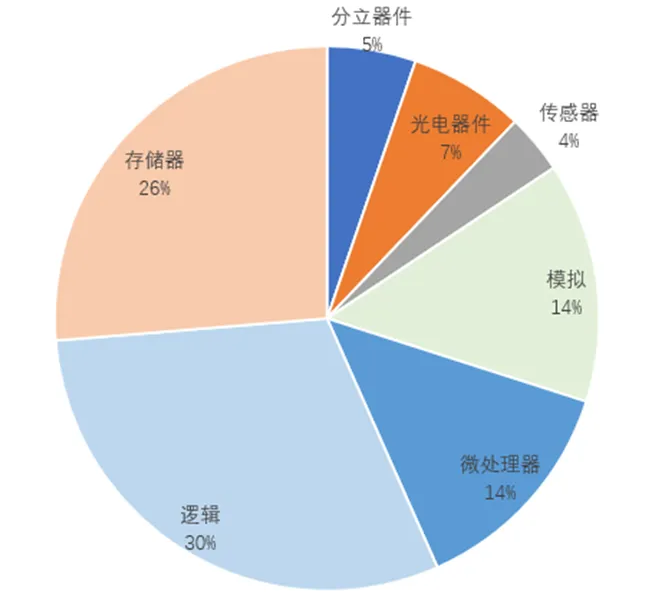
Proportion of Major Semiconductor Categories Globally in 2022
Memory has declined somewhat but still accounts for 26%
Semiconductor memory is a large category that can be further divided into: volatile (VM) memory and non-volatile (NVM) memory.
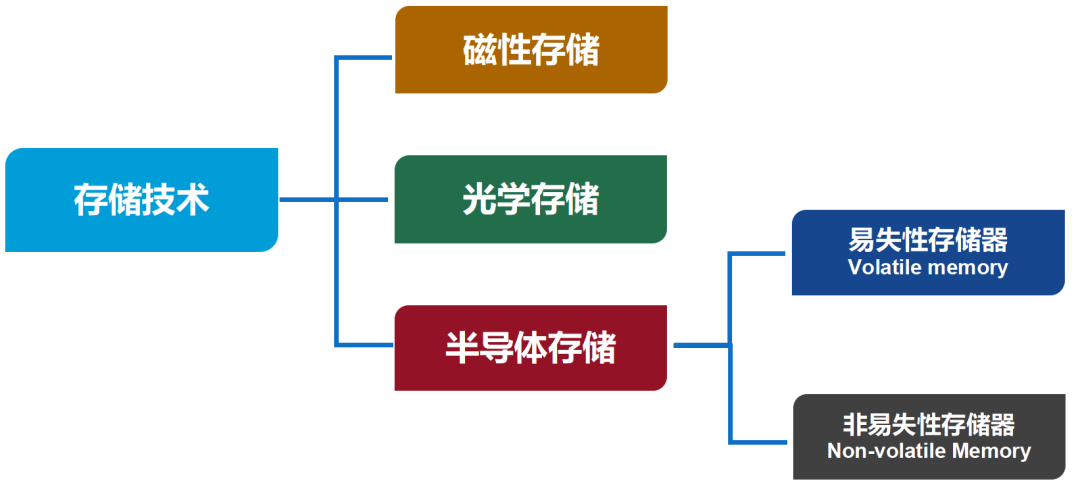
As the names suggest, volatile memory cannot retain data after the circuit is powered off, while non-volatile memory can retain data.
This is actually quite easy to understand. Those who have studied basic computer knowledge should remember that storage is divided into internal memory and external storage.
Internal memory used to be called operational memory; it works with the CPU and others when the computer is powered on. After power off, the data is lost, which belongs to volatile (VM) memory.
External storage, on the other hand, is the hard disk that stores a large number of data files. When the computer is turned off, as long as you perform a save (write) operation, the data will continue to exist, which belongs to non-volatile (NVM) memory.
Please note: Nowadays, many materials also classify semiconductor memory into random access memory (RAM) and read-only memory (ROM), which should be quite familiar to everyone, right?

ROM (Read-Only Memory): It is easy to understand; it can be read but not written.
RAM (Random Access Memory): It refers to its ability to “randomly read or write data from any storage unit in the memory,” which is relative to traditional magnetic storage that must be “sequential access.”
Some people believe that volatile memory is RAM and non-volatile memory is ROM. In fact, this is not precise, and the reasons will be explained later.
In the past few decades, there have not been significant changes in volatile memory, which is mainly divided into DRAM (Dynamic Random Access Memory) and SRAM (Static Random Access Memory).
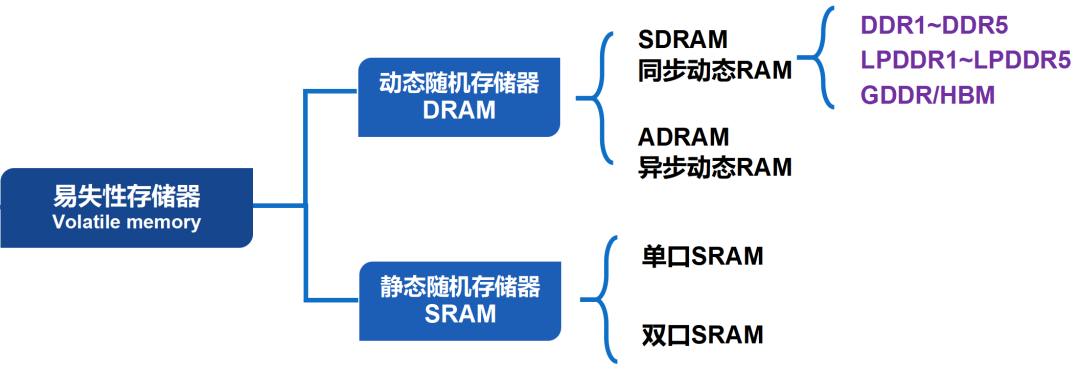
-
DRAM
DRAM consists of many repeating bit cells, each basic unit made up of a capacitor and a transistor (also known as 1T1C structure). The amount of charge stored in the capacitor is used to represent “0” and “1”. The transistor is used to control the charge and discharge of the capacitor.
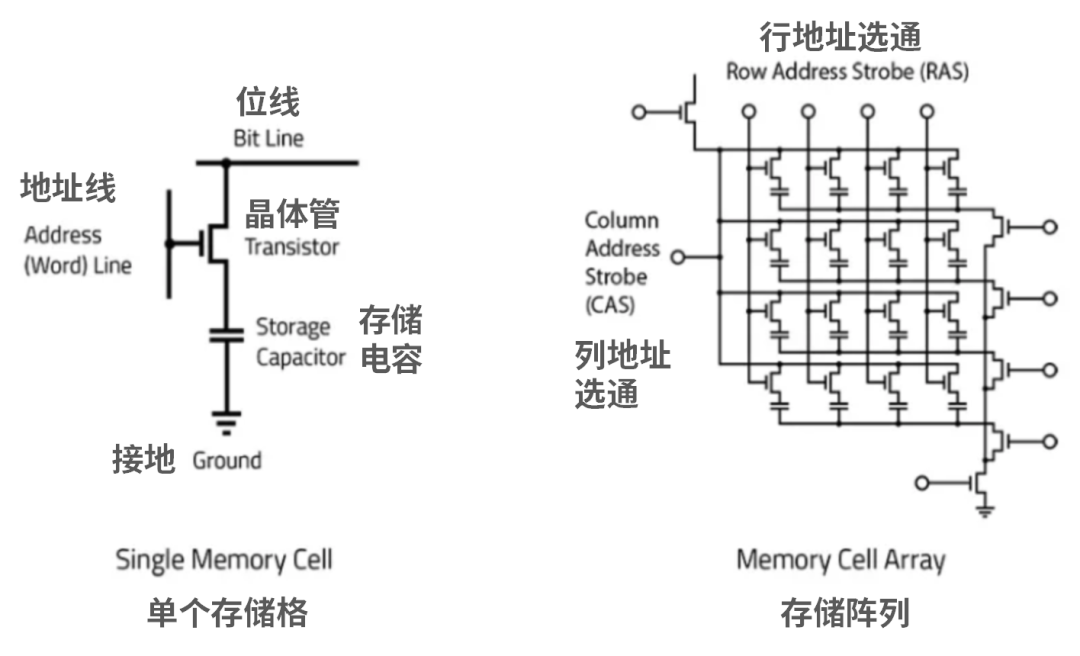
Image source: Lam Research
Due to the leakage phenomenon of the capacitor, it must periodically perform “dynamic” charging before the data changes or before power off to maintain the potential. Otherwise, the data will be lost.
Therefore, DRAM is called “dynamic” random access memory.
DRAM has always been the mainstream solution for computer and mobile phone memory. The memory sticks (DDR) in computers, the video memory (GDDR) in graphics cards, and the operational memory (LPDDR) in mobile phones are all types of DRAM. (DDR basically refers to DDR SDRAM, Double Data Rate Synchronous Dynamic Random Access Memory.)
It is worth mentioning that in terms of video memory, in addition to GDDR, there is a new type of video memory called HBM (High Bandwidth Memory), which is formed by stacking many DDR chips together with the GPU (the memory chips are not visible externally).
-
SRAM
SRAM may be less familiar to everyone. In fact, it is the technology used in CPU caches.
The architecture of SRAM is much more complex than that of DRAM.
The basic unit of SRAM consists of at least 6 transistors: 4 field-effect transistors (M1, M2, M3, M4) form two cross-coupled inverters, and 2 field-effect transistors (M5, M6) are used to control the read and write bit lines (Bit Line), forming a latch (flip-flop) that locks binary numbers 0 and 1 when powered on.
Thus, SRAM is referred to as “static random access memory.”

SRAM does not require periodic refreshing, has a fast response speed, but has high power consumption, low integration, and is expensive.
Therefore, it is mainly used in the main cache and auxiliary cache of CPUs. Additionally, it is also used in FPGAs. Its market share has always been relatively low, with a weak presence.
Next, let’s take a look at non-volatile memory products.
The technology routes of non-volatile memory products are quite diverse. The earliest is the previously mentioned ROM.
The oldest ROM is the “real” ROM—completely read-only; the content is written at the factory and cannot be modified.
This type of ROM has very poor flexibility; if there is a mistake in the content written, it cannot be corrected and can only be discarded.
Mask ROM is a representative of this type of ROM. Simply put, it directly uses mask technology to “engrave” information into the storage device, making it impossible for users to change it, suitable for early mass production.
Later, experts invented PROM (Programmable ROM). This type of ROM can generally only be programmed once. At the factory, all storage units are set to 1. Through specialized equipment, by using current or light (ultraviolet), fuses can be blown to rewrite data.
PROM has higher flexibility than ROM but is still not sufficient. The best option is to be able to modify data, leading to the invention of EPROM (Erasable Programmable ROM).
The erasing method can be either light or electricity. The more convenient method is to use electricity, which is called EEPROM (Electrically Erasable Programmable ROM).

EEPROM is modified at the byte level as the smallest unit.That is to say, you can write 0 or 1 to each bit, reading and writing by “bit” without needing to erase the entire content before rewriting.Its erasing operation is also at the “bit” level, but the speed is still too slow.
In the 1980s, a technical expert from Toshiba, Fujioka Tomio, invented a new type of memory that could perform fast erase operations, known as—Flash memory.
Flash in English means “quickly.”Flash storage erases data in “blocks.”
The common block sizes are 128KB and 256KB. 1KB is 1024 bits, which is several orders of magnitude faster than EEPROM that erases at the bit level.
Currently, the mainstream representative products of FLASH are only two: NOR Flash and NAND Flash.
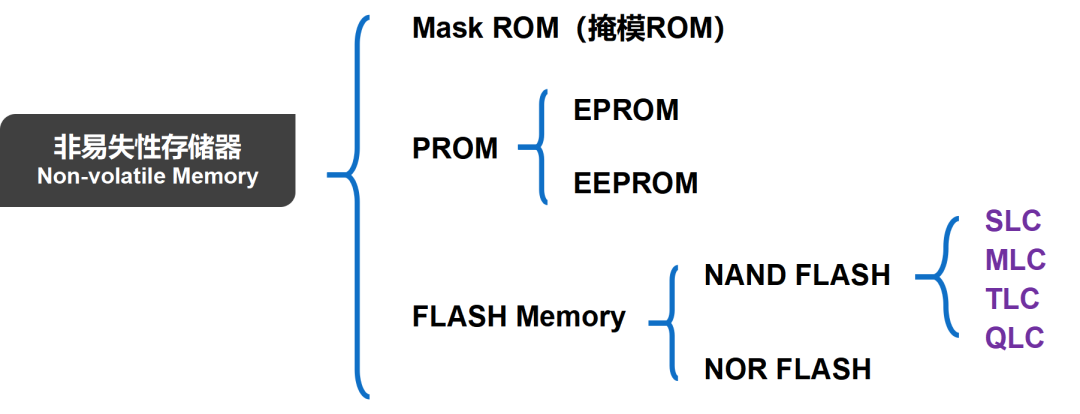
-
NOR Flash
NOR Flash is a code-type flash memory chip whose main feature is executing in place (XIP), meaning that applications do not need to read the code into system RAM but can run directly in Flash memory.
Thus, NOR Flash is suitable for storing code and some data, offering high reliability and fast reading speeds, with performance and cost advantages in medium to low capacity applications.
However, NOR Flash has slow writing and erasing speeds, and its size is twice that of NAND Flash, so its usage is limited, and its market share is relatively low.
In the early days, NOR Flash was used in high-end mobile phones, but later, with the introduction of eMMC in smartphones, even this market was squeezed out.
In recent years, NOR Flash has seen a resurgence in application, with a recovery in the market. It is widely used in low-power Bluetooth modules, TWS headsets, mobile phone touch and fingerprint sensors, wearable devices, automotive electronics, and industrial control.
-
NAND Flash
In contrast, NAND Flash has a much larger market share.
NAND Flash is a data-type flash memory chip that can achieve large capacity storage.
It reads and writes data in pages and erases data in blocks, so while its writing and erasing speeds are about 3-4 orders of magnitude slower than DRAM, it is still 3 orders of magnitude faster than traditional mechanical hard drives, making it widely used in eMMC/EMCP, USB drives, SSDs, and other markets.
Earlier, eMMC was quite popular.
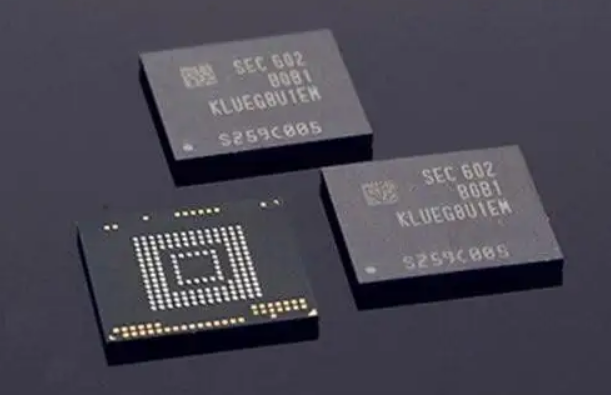
eMMC
eMMC stands for embedded Multi Media Card, which packages the MMC interface, NAND, and main controller into a small BGA chip, mainly to solve compatibility issues among NAND brands, facilitating manufacturers to quickly and simply launch new products.
eMCP further integrates eMMC with LPDDR, reducing module size and simplifying circuit connection design.
In 2011, the UFS (Universal Flash Storage) 1.0 standard was born. Later, UFS gradually replaced eMMC and became the mainstream storage solution for smartphones. Of course, UFS is also based on NAND FLASH.
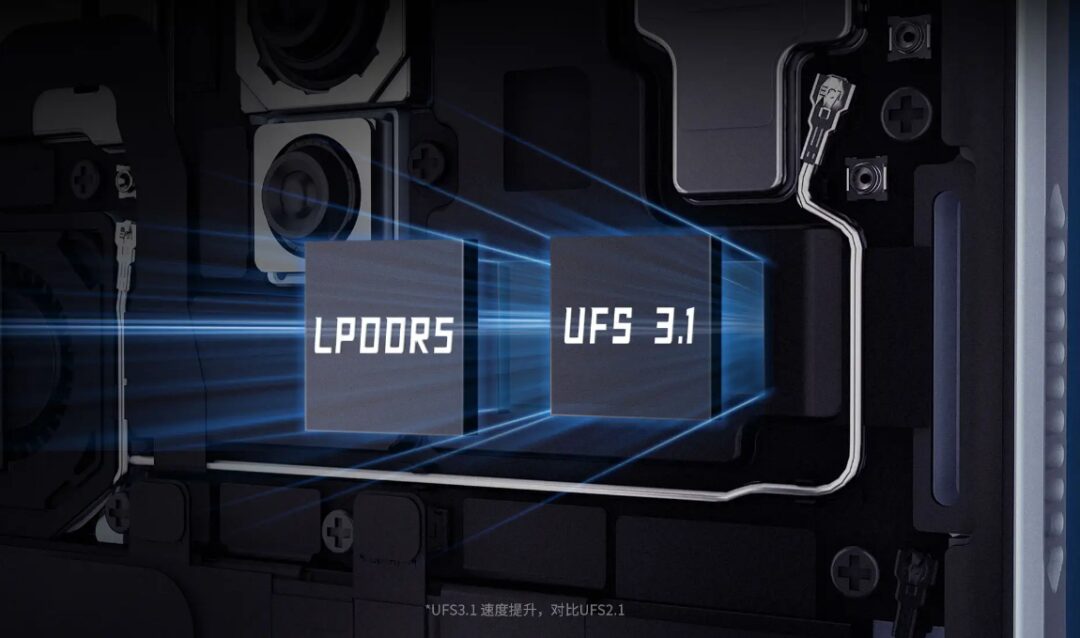
These years, SSDs have become quite familiar to everyone.They are basically all using NAND chips and are currently developing rapidly.
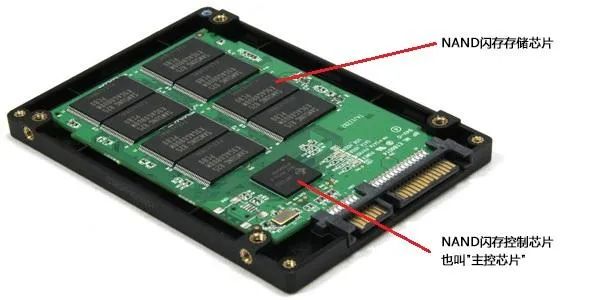
Internal Structure of SSDs
Based on differences in the density of electronic units, NAND can also be divided into SLC (Single-Level Cell), MLC (Multi-Level Cell), TLC (Triple-Level Cell), and QLC (Quad-Level Cell), representing the number of bits stored in each storage unit as 1, 2, 3, and 4, respectively.
From SLC to QLC, the storage density gradually increases, and the cost per bit decreases. However, performance, power consumption, reliability, and P/E cycles (the number of erase/write cycles, i.e., lifespan) will decrease.
In recent years, there has been considerable debate in the DIY assembly community regarding SLC/MLC/TLC/QLC. Initially, users thought that the lifespan of SSDs would shrink. Later, they found that the shrinkage wasn’t as severe, and the lifespan was still sufficient, so they gradually accepted it.
Early NAND was all 2D NAND. As the process technology entered 16nm, the cost of 2D NAND skyrocketed, and the difficulty and cost of planar miniaturization became unmanageable. Thus, 3D NAND emerged.

Image source: electronics-lab
In simple terms, it is like moving from a single-story house to a multi-story building, utilizing three-dimensional stacking to increase memory capacity and reduce the process pressure of 2D NAND.
In 2012, Samsung launched the first generation of 3D NAND flash memory chips. Since then, the technology of 3D NAND has continued to evolve, with the number of stacked layers increasing and capacity expanding.
In 2021, IBM introduced the concept of “Storage-Class Memory” (SCM). IBM believes that SCM can replace traditional hard drives and complement DRAM.
The exploration of new types of memory (media) is behind SCM.
According to industry consensus, new types of memory can combine the high-speed access of DRAM with the data retention characteristics of NAND flash after power off, breaking the boundaries between memory and flash, merging them into one, achieving lower power consumption, longer lifespan, and faster speeds.
Currently, several new types of memory include phase-change memory (PCM), resistive memory (ReRAM/RRAM), ferroelectric memory (FeRAM/FRAM), magnetic memory (MRAM, with the second generation being STT-RAM), and carbon nanotube memory.
Due to space limitations, I won’t introduce each one today.
To summarize, I have drawn a complete classification diagram of semiconductor storage:

This diagram contains many types of memory. However, as I mentioned earlier, you should focus on DRAM, NAND Flash, and NOR Flash because these three types of memory account for over 96% of the market share today.
In fact, all types of memory will find their own position in the market based on their characteristics and play their respective roles.
Generally speaking, the stronger the performance of the memory, the more expensive it will be, and the closer it will be to computing chips (CPU/GPU, etc.). Weaker performance memory can meet some needs with low storage latency and insensitivity to write speeds, thus reducing costs.
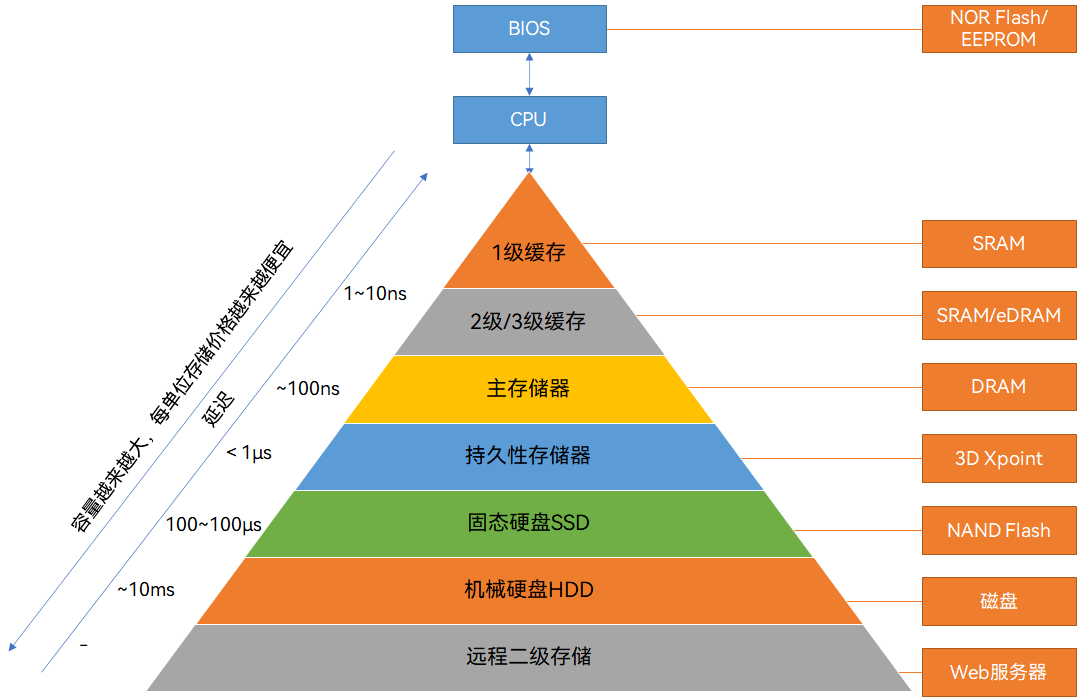
Typical Memory Hierarchy in Computer Systems
Image source: Guokel Hard Technology
The evolution of semiconductor storage technology has always benefited from Moore’s Law, continuously improving performance while reducing costs. In the future, as Moore’s Law gradually becomes ineffective, where will semiconductor storage technology head, and will new storage media rise? Let us wait and see.
Reproduced content only represents the author’s views
Does not represent the position of the Institute of Semiconductors, CAS
